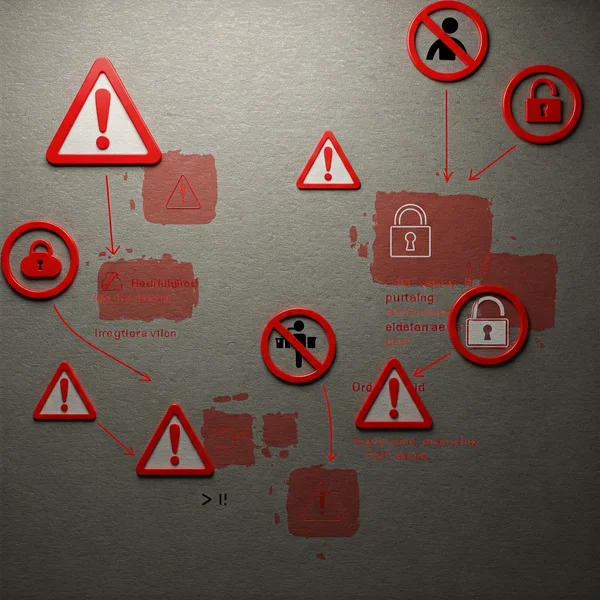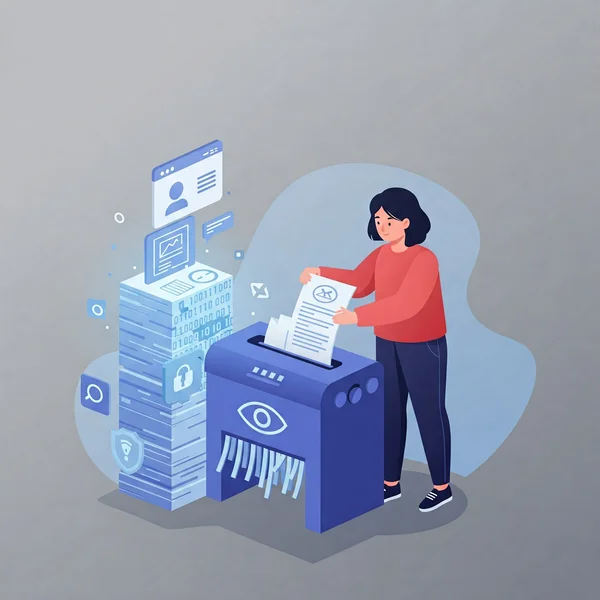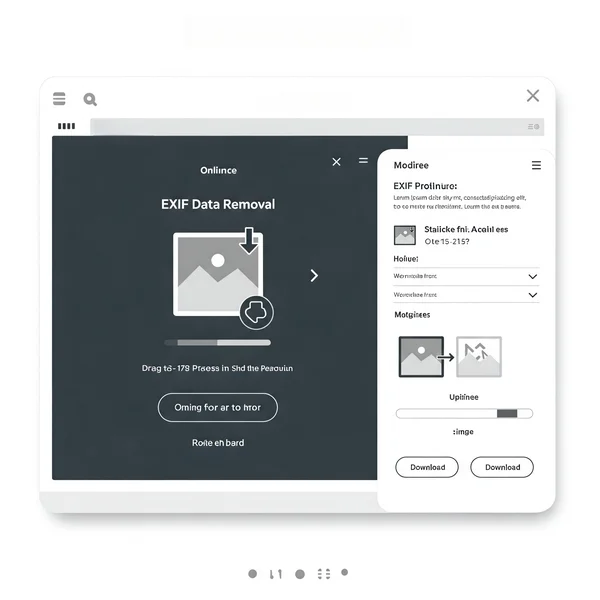Protect Privacy: Remove EXIF Data Before Sharing Photos
Why & How to Easily Strip Photo EXIF Data
In today's digital age, sharing photos online is second nature. But did you know that every picture you snap can carry a hidden bundle of information called EXIF data? While some of this data is harmless, other parts can expose sensitive details you'd rather keep private. Why should I remove EXIF data before hitting that share button? This guide will explain the importance of photo privacy, delve into why you should strip exif data, and show you how to easily perform exif data removal, potentially using a reliable online EXIF tool as part of your workflow.

What Sensitive Information Lurks in Your EXIF Data?
Understanding what EXIF data is risky is the first step towards better photo privacy. Many users are unaware of the extent of sensitive information exif can contain.
Revealing Your Exact Location
Perhaps the most concerning piece of EXIF data is geolocation. If your camera or smartphone's GPS was active, the exact coordinates of where the photo was taken are embedded. This can inadvertently reveal your home address, workplace, or frequent hangouts, posing a risk of location tracking.
Tracking Your Activities
Detailed timestamps can create a pattern of your activities and routines. While useful for personal organization, this information might be something you don't want publicly accessible when online sharing.
Camera/Phone Model and Specifics
EXIF data often includes the make and model of your camera model or phone, and sometimes even the serial number or unique lens identifiers. This specific device information could potentially be used for targeted exploits or to link photos back to you.
Personal Notes or Copyright Info You Might Want to Keep Private
Some EXIF fields can store custom text, like personal notes or detailed copyright information. While copyright is important, you might not want every detail shared with every photo.
Why Bother with EXIF Data Removal? Key Reasons to Protect Your Privacy
Now that you know what's potentially at stake, let's explore the key reasons for performing exif data removal to protect online privacy.
Preventing Unwanted Location Tracking and Stalking
The most obvious benefit is preventing malicious individuals from using geotags for location tracking or, in worse scenarios, stalking. Remove geotag information is a crucial step for personal safety.
Safeguarding Personal Information from Data Brokers or Malicious Actors
Your combined EXIF data can build a profile. Personal data, even seemingly innocuous details, can be aggregated by data brokers or exploited by those with ill intent.
Maintaining Anonymity and Control Over Your Digital Footprint
Consciously managing what information you share online helps you maintain a degree of anonymity and control over your digital footprint. Stripping EXIF data is a part of this responsible digital citizenship.

Protecting Children's Privacy When Sharing Family Photos
When sharing photos of children, photo privacy becomes paramount. Removing location and device details helps protect their safety and anonymity from prying eyes.
How to Easily Remove EXIF Data Before Sharing: Using an Online EXIF Remover
So, how to remove EXIF data online? The good news is it doesn't have to be complicated. Many tools can help, and understanding your data first is key.
Introducing exifreader.org for EXIF Management
Before you delete exif data, it's essential to know exactly what information your photo contains. A tool like an EXIF data viewer allows you to inspect all the embedded metadata. This way, you can make an informed decision about which specific tags to remove or if you want to perform a complete metadata stripping. Understanding the data is the first step in effective EXIF management.
Using an Online Tool to Strip EXIF Data
While the exact steps can vary between different exif data remover tools, the general process for metadata stripping often looks like this:
- Sub-step 1: Upload or Select Your Photo Most online tools will have an area where you can upload your image or select it from your device.
- Sub-step 2: Choose Options to Remove Specific EXIF Tags or All Metadata Good tools offer flexibility. You might be able to choose to remove geotag information specifically, or opt to clear all EXIF data, transforming it into an image cleaner process.
- Sub-step 3: Process and Download the Cleaned Image After processing, you'll download a new version of your photo, now free of the selected (or all) EXIF data.
(Please note: While an online EXIF reader is excellent for viewing and understanding EXIF data, which is crucial before removal, its direct EXIF removal/editing capabilities might vary. Always check the specific features offered by the tool you choose for the final removal step.)

The Importance of Using a Secure EXIF Data Remover
Is it safe to remove EXIF data with online tools? If you're using an online tool to strip exif data, ensure it’s a secure tool. Ideally, it should process images on the client-side (in your browser) without uploading your photos to a server, much like how a secure EXIF viewer operates for viewing data. This minimizes privacy risks.
What About Social Media? Do Platforms Remove EXIF Data Automatically?
A common question is: Do social media platforms remove EXIF?
How Facebook, Instagram, Twitter (X) Handle EXIF Data
Most major social media platforms like Facebook, Instagram, and Twitter (now X) do strip most EXIF data from uploaded images, primarily for user privacy and to reduce file sizes. They often remove geolocation, camera model, and other sensitive details.
Why You Shouldn't Solely Rely on Platforms for EXIF Removal
While platforms often perform exif data removal, their policies can change, and the extent of removal isn't always transparent or guaranteed. Furthermore, if you share photos through other means (email, direct messaging apps that don't strip data, personal blogs), the EXIF data will remain intact. Proactively managing your photo privacy by removing EXIF yourself offers more consistent protection.
Other Ways to Manage Photo Privacy
Besides actively using an exif data remover, consider these additional measures:
Disabling Geotagging on Your Camera/Phone
The most effective way to prevent location tracking through photos is to disable geotagging in your camera or smartphone settings before you take pictures.
Being Mindful of What You Share and Where
Always think twice before online sharing. Consider the audience and the platform. Not every photo needs to be shared publicly.

Take Control of Your Photo Privacy by Managing EXIF Data
Your photos tell stories, but they shouldn't tell too much without your consent. By understanding the risks associated with embedded EXIF data and taking steps to remove exif data or perform metadata stripping, you actively take control of your photo privacy and digital footprint. It's an essential habit for safe and responsible online sharing.
Before you share your next photo, take a moment to consider its hidden data. You can easily check what's inside using an online tool, and then decide on the best course of action for removal. What's your biggest concern about EXIF data and privacy? Share your thoughts in the comments below!
Removing EXIF Data for Enhanced Privacy
Here are some frequently asked questions about exif data removal:
Does removing EXIF data affect photo quality?
Generally, no. The EXIF data is stored separately from the actual image pixel data. Removing it usually doesn't impact the visual quality or resolution of the photograph.
Can I selectively remove only certain EXIF tags (like location) but keep others (like camera settings)?
Yes, many exif data remover tools and software allow you to selectively remove EXIF tags. This is useful if you want to remove geotag information but keep creative data like camera model or exposure settings for your records.
Is it illegal to remove EXIF data?
For your own photos, removing EXIF data for privacy reasons is generally not illegal. However, altering or removing EXIF data from photos you don't own, especially if it involves removing copyright information with intent to infringe, could have legal implications.
If I remove EXIF data, can it ever be recovered?
Once EXIF data is properly stripped from an image file and that new file is saved, the removed data is typically gone for good from that specific file. It's like deleting text from a document and saving it – the deleted text isn't easily recoverable from the saved version. Always keep an original copy if you think you might need the EXIF data later.
What is the best free tool to remove EXIF data online?
Many free tools exist. When choosing an online exif remover, prioritize security (client-side processing is best) and ease of use. While some tools focus solely on removal, remember that understanding what data to remove is crucial. Therefore, using a reliable EXIF viewer service first to inspect your metadata is a highly recommended step in any EXIF removal workflow.